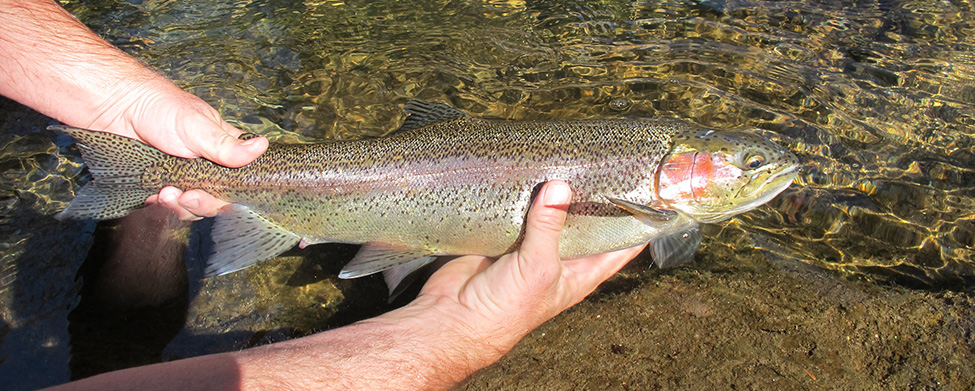What’s Wrong With the Biological Opinion
Hydrology
Dan Steiner is an expert in modeling river hydrology. He studied the affect of the BO reasonable and prudent alternatives (RPAs) on the river. His research used the accepted CALSIM II in river models that applied the RPAs from the BO in the river over an 80 year period. The findings show:
What Is the BO?
The Biological Opinion (BO) is a document by the federal government’s National Oceanic Atmospheric Administration’s (NOAA) Fisheries Service, (National Marine Fisheries Service or NMFS). It was released on June 4, 2009. The purpose of the document is to protect the Central Valley steelhead from the operations of New Melones Reservoir.
- The New Melones Reservoir would go empty 13 times during the period, where it would have only gone dry one time.
- The reservoir would drop below the critical 500 TAF (thousand-acre-feet) level 22 times, during the period, which would have only occurred 4 times historically.
- OID/SSJID water is taken up to a maximum of 200,000 AF.
- SEWD/CSJWCD are cut up to a maximum of 100,000 AF.
Water Temperature
- NMFS did not use the Stanislaus River Basin Temperature Model, a Model which they were an active participant in developing, to analyze flow and temperature objectives.
- The Stanislaus Temperature Model is a cooperative model by OID/SSJID, USFWS (United States Fish and Wildlife Service), USBR (United States Bureau of Reclamation) and CDF&G (California Department of Fish and Game). It has been approved by CALFED and Peer Reviewed.
- The Temperature Objectives for April can only be met 20%, May 10%, October 50%.
- The water cost to meet the Temperature Objectives is enormous; it will deplete the reservoir, and has no biological benefit to O. mykiss.
- The water cost was not factored into NMFS hydrology modeling.
River Biology
- O. mykiss are in good condition on the Stanislaus River under current operations. Why the dramatic change?
- Fall run chinook salmon (“FRCS”) on the Stanislaus River are in better condition than almost every tributary to Sacramento/SJR under current ops. Why the dramatic change?
- The proposed RPAs will have a devastating impact on FRCS and O. mykiss due to the boom, “BUST” operation plan by NMFS.
- When New Melones Reservoir goes below 300,000 AF or dry water temperatures will be lethal for O. mykiss and FRCS.

O. mykiss is the scientific species name for the entire population of rainbow trout and Central Valley steelhead. While steelhead are the ocean going form of O. mykiss, rainbow trout are the resident form staying in the rivers and deltas. Steelhead are anadromous, meaning they primarily live in the ocean but breed in fresh water. rainbow trout may or may not become anadromous at some point in their life-cycle.
The Stanislaus River currently has more than 20,000 wild rainbow trout. While it is impossible to determine the percentage of these fish that will remain resident rainbow trout in the River, and will instead leave the Stanislaus River and eventually find their way to the ocean, the Districts have counted an average of 100 steelhead leaving each year from the Stanislaus River to the ocean. While existing river flows have been sufficient to support the thriving rainbow trout fishery, the BO is designed to increase flows to protect the steelhead (the anadromous form of O. mykiss). The Districts studied the effects of the BO and concluded it will actually reduce flows in more years and raise water temperature to lethal levels endangering the O. mykiss.
